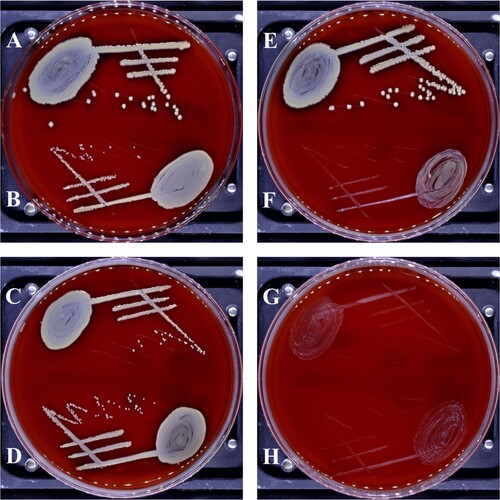Figures & data
Figure 1. Stepwise selection for linezolid and tedizolid resistance in S. aureus (ATCC 29213). S. aureus was grown overnight at 37°C on Columbia agar plates supplemented with 5% sheep blood. The grown colonies were added to TSB medium with linezolid, starting at concentrations of 1 and 2 mg/L, and tedizolid, starting at concentrations of 0.125 and 1 mg/L, followed by an incubation step for 24 h. The incubated mixture with the highest concentration, which showed turbidity, was used for further selection steps (as seen in Generations 1-3). During the second selection trial, induction for linezolid was repeated over 20 generations with final concentrations of 128 and 256 mg/L and induction for tedizolid was repeated over 16 generations with final concentrations of 4 and 8 mg/L, respectively.

Table 1. Identification of linezolid resistant (LRSA) and tedizolid resistant (TRSA) strains after induction with their respective MIC against either LZD and TZD as well as the identified underlying mutations being the cause of resistance.
Figure 2. ATCC 29213 colonies before (A, E) and after (B-D, F-H) induction of antimicrobial resistance. Linezolid resistant isolates LZD20 (B), LZD15 (C) and LZD18 (D) showing barely any difference in growth compared to the reference strain (A). Being small colony variants (SCV) TZD16 (F), TZD13 (G) and TZD15 (H) showing difference in growth as means of elevated resistance.

